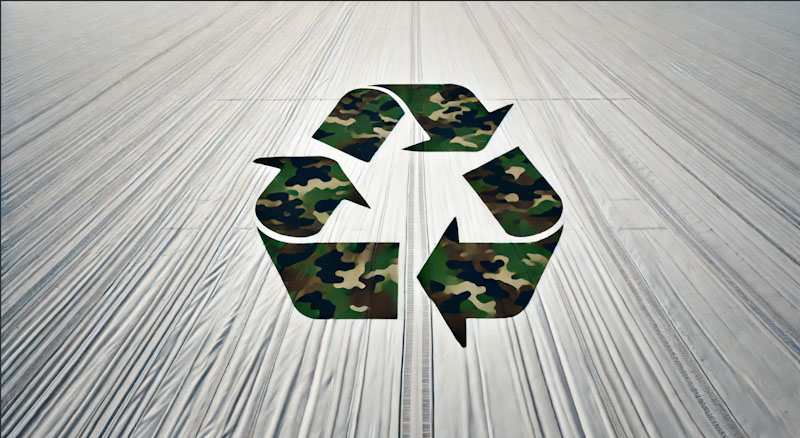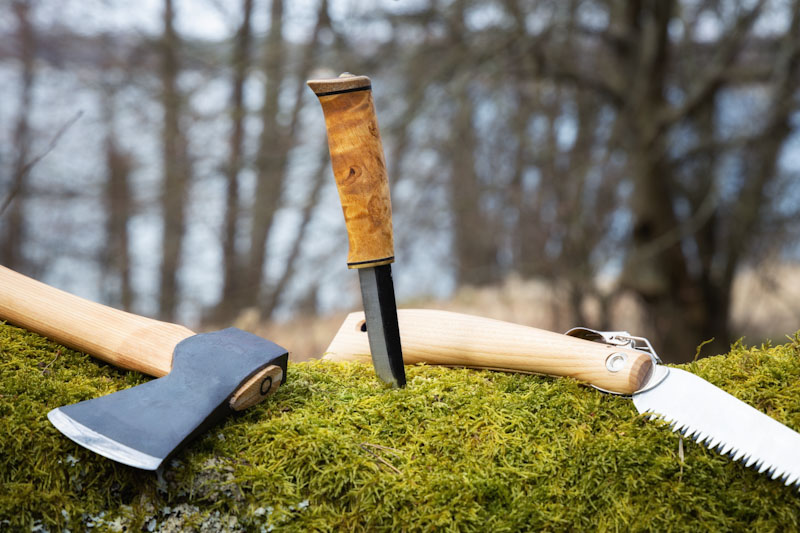The outsider might not think conservation and survivalism have much common ground and that is true of pseudo-environmentalists and pseudo-survivalists. The pseudo-environmentalist’s understanding of nature comes from what they see on TV or out their car or lodge windows in national parks. Few of them grow any of their own food or understand where it comes from and their contribution to nature mainly consists of virtue signaling on social media. Pseudo-survivalists populate the “all guns, no groceries” crowd. Their contact with nature consists of getting lit and using it for target practice and buying paramilitary and bushcraft gear. They experience nature mostly by watching TV shows and YouTube videos about others experiencing it. But true environmentalists and true survivalists do, in fact, have common ground. In fact, most of the true survivalists I know are dedicated conservationists with a profound appreciation of nature and many of the true conservationists I hunt and fish and appreciate survival because survival is a dominant theme in nature.
Both are concerned with what they are putting into their bodies, where it comes from, reducing dependence on poor quality food and goods shipped from half a world away. They both are concerned about monoculture, the overuse of pesticides and fossil fuel fertilizers, the proliferation of genetically modified organisms in our food supply and what is doing to our soil, and the trend of small farmers being squeezed out by giant corporations. They are concerned that less than 2% of us grow food for the other 98%. Let’s examine some of the common ground between the two.
Reducing Dependency on Disposables
Conservationists don’t like single-use disposable products because they generate garbage and microplastics. Survivalists don’t like garbage or microplastics either, and stockpiling a year or more worth of disposable products presents headaches for us. Disposables are more expensive, take up more storage space, and they may not be able to be replaced once they get used up, so they are not sustainable in a long-term disruption because no matter how much we store, we eventually run out. So at bare minimum, survivalists need a plan to transition to sustainable products when they run out of disposables.
Also, depending on the nature of the disaster, survivors must sometimes bugout in order to survive, leaving behind the stockpile stored at their primary residence. If a survivor’s home and bugout location are burned, looted or destroyed, then they could lose nearly everything they have stockpiled.
It is also better for the planet to use alternatives to disposables. The land used to plant and harvest trees for consumable paper products could be put to better use and the fossil fuels burned to distribute them, store them, and sell them can be saved by switching to sustainable products milled closer to home.
Furthermore, single-use disposables can come with psychological obstacles to their use. One such example is breaking out a space blanket. It is sometimes viewed as an admission that the survivor made mistakes (they got lost, were not properly prepared and equipped, sustained injury due to inexperience, should have known better, etc.) and is now, humiliatingly, in an emergency of their own making. Cost can be another obstacle, so do not buy expensive disposable lifesaving products that you cannot afford to use. Otherwise, it may be too late by the time you break down and use it. Space blankets, for example, don’t generate heat, they only reflect it back. They must be used early in a survival ordeal while your body is still generating heat for the blanket to reflect back at you.
No such obstacle exists to breaking out a reusable blanket … psychological or otherwise. If you use it, you can just shake it out, fold it back up, and it will be ready to use again.
Garbage, Recycling, Composting & Food Production
Garbage is not desirable for either of us either. Without waste management services, any garbage or packaging that is not reusable or easily recyclable at home, cannot go in the compost bin, or cannot be safely burned to generate heat, is a problem for the survivalist just as it is a problem for the conservationist. Landowners must dedicate part of their property as a landfill until waste management services are restored. Apartments dwellers will live next to ever-growing piles of rotting garbage until services are restored.
Both survivalists and conservationists know the value of composting waste to amend garden soil. They both like to grow what food they can and to get the rest locally. We both like to know where our food comes from and avoid genetically modified organisms, expensive fossil fuel fertilizers, pesticides, and the overuse of antibiotics. We both want healthy soil and healthy food.
Toilet Paper, Wet Wipes & Diapers
The prospect of running out of toilet paper was so scary to the average American, that TP became the target of panic buying and hoarding during the COVID-19 pandemic. Their fear had nothing to do with survival. Although there is evidence that paper was used for hygiene at least back to the 4th century, toilet paper was not widely commercially available until the mid-1800’s and much of the world still doesn’t use it even today. (Ponti, 2020) They were afraid of losing access to a convenience that they had become accustomed to. For those who were not aware that there are other options to toilet paper their fear was born of ignorance. Perhaps those who were aware, were simply afraid of change. The fact is, there were, and are, other options.
Toilet paper appears to have been a Chinese invention. Our ancestors also used leaves, moss, seashells, bamboo spatulas, little wooden boards, bits of ceramic (both with and without the names of enemies imprinted on it) and sea sponges attached to sticks which were dipped in vinegar or saltwater. (Wikipedia, 2024) (Wikipedia, Xylospongium, 2024) The latter was used by the Romans and was called a xylospongium or tersorium and academics debate how they were used. Were they communal, carried in tubes on the belt, or used as toilet brushes? I’m sure the Romans have a good laugh learning that such things are researched and discussed and argued about today in the classrooms and offices of Oxford and Harvard.
In areas where water is plentiful, using a bidet and neutral soap is a hygienic and comfortable option. You don’t need to install a separate bidet either. It is inexpensive to retrofit a standard toilet with a bidet or one can use a travel bidet whether bugging out or sheltering in place. For that matter, a travel bidet can be improvised form a hot water bottle with an accessory kit, a hydration blader, or even a plastic water bottle. In any case, access to plenty of good water is a priority that is already included in survivalists’ plans.
When water is scarce, such as when backpacking from one water source to another in desert southwest, the personal cloth is the toilet paper alternative of choice. A moist cotton washcloth can be used as a personal cloth, but modern personal cloths are often woven from fibers with antibacterial properties.
Add 50% witch hazel and personal cloths become the cloth diaper version of Tuck’s pads. Personal cloths should be carried with neutral soap and at least two plastic bags; one for everything clean and other for anything that hasn’t been thoroughly washed and boiled yet. Muji used to sell a miniature plastic washboard for travel use, but any wavy rubber or plastic surface such as a clean flip flop, or even a clean, flat rock, can serve as an improvised wash board.
Speaking of cloth diapers, before we started filling our landfills with disposable diapers for the sake of reduced workload, babies wore cloth diapers and were potty trained younger than they are now. Cloth diapers are more work, unless you use a diaper service, but it is not possible to carry enough disposable diapers while traveling overland, making cloth diapers a necessity for traveling long distances overland.
Facial Tissue, Napkins, Paper Towels
Handkerchiefs and bandanas can be used instead of facial tissue. I was taught to carry a handkerchief, bandana, a pocketknife, and some extra cash. It’s amazing how many problems can be solved with these few simple tools.
Cloth napkins can be used in stead of paper napkins, and cleaning rags and kitchen towels can be used instead of paper towels, saving trees for the conservationists and money that the survivalist can save or use to prepare for emergencies.
Appreciation and Conservation of Nature
Survivalists are hunters, fishermen, bushcrafters, and students of primitive survival skills, and no one cares more about the environment or does more to preserve it than those who are in it and appreciate it day in and day out.
It was not by accident that I used the word “conservation” instead of “leave no trace.” As has been pointed out by Dave Wescott and David Holladay, leaving no trace is a physical impossibility. Living is an act of consumption. The “leave no trace” crowd thinks we should put U.S. lands in a glass case and consume products that come from other countries, and they are produce most economically in those countries with the fewest environmental regulations and the least oversight.
Trashing somebody else’s back yard isn’t a valid conservation strategy because we all live on the same planet, and all of the Earth’s natural systems are connected. Man, and his ancestors, evolved in nature, and have lived as part of nature for millions of years. Other parts of nature have adapted to us, and we have adapted to them.
Separating man from nature is a big mistake. The more people interact with the natural world, the more they learn to love it, appreciate it and naturally seek to conserve it.
References
Ponti, C. (2020, April 15). All the Ways We’ve Wiped: The History of Toilet Paper and What Came Before. Retrieved from history.com: https://www.history.com/news/toilet-paper-hygiene-ancient-rome-china
Wikipedia. (2024, March 6). Shit Stick. Retrieved from Wikipedia.org: https://en.wikipedia.org/wiki/Shit_stick
Wikipedia. (2024, March 7). Xylospongium. Retrieved from wikipedia.org: https://en.wikipedia.org/wiki/Xylospongium













































































anything paper, even if used can be used in a compost pile. put it in a pile and cover it with dirt until next year,. we never put anything in with the garbage with our name on it because of identity theft. very little goes into our garbage can down the road for the county boys to pick up, mostly metal cans and plastics. we burn and compost most everything else.
Good for you Scout, and thank you for sharing. Amazing how our parents and grandparents, some of us even in our 60’s and upwards have used cloth diapers on our children, we wore them, our grandparents, great grandparents, and backwards wore them, they were washed over and over and over, recycled like crazy, sometimes through multiple children, but they didn’t know anything about recycling and being “green”. News papers and non slick magazine pages were used as TP by our ancestors, much less leaves, old clothing scraps, etc., and as appropriate went into the privy pit or was washed to be reused, but our poor ancestors didn’t know anything about recycling and being “green.” Nails that had been pulled from boards were carefully unbent and straightened so they could be used again, shovel or other instrument handles were mended and the instrument continued being used, large enough empty cans were used again in more permanent use areas such as being the bottom corner foundation for gate posts to be cemented into, and outside laundry drying lines or inside drying racks were used for clothes drying instead of these energy gobbling clothes dryers, and the list could go on forever, but so sadly our ancestors didn’t know anything about recycling and being “green.” Nope, it was just their way of life.
we save cans both food steel and soda aluminum for recycle ($$), we compost paper, and refill water (well) bottles, plastic food container are reused as seed trays, my husband burns anything that is left or can not be reused. NO trash pick up, NO bill, saves the planet and our money.